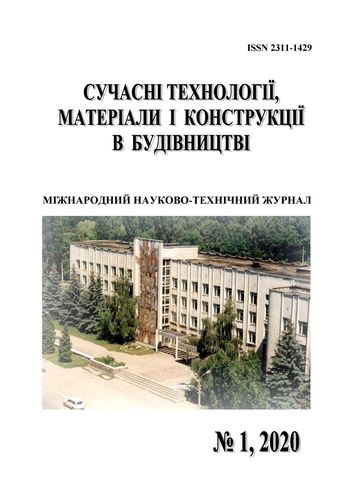SECURING EFFICIENTLY MICROCLIMATE DURING RECONSTRUCTION OF HISTORICAL CULTURE ENTERPRISES BUILDINGS
DOI:
https://doi.org/10.31649/2311-1429-2020-1-93-99Keywords:
energy saving, theater, air conditioning, air distributionAbstract
In modern conditions, the practice of reconstructing historical buildings, in particular theaters, philharmonic halls, and concert halls, is becoming widespread. Such buildings have significant amounts of air conditioning and large open areas for the location of spectators. Regulatory documentation and increased requirements for operating conditions require increased attention to the installation of air conditioning systems to ensure optimal conditions for people to stay in these rooms. The practice and theory of ventilation proves that the premises of large facilities, as mentioned above, require the use of air heating to ensure normalized microclimate parameters in the cold season and air cooling in the warm season. A significant difference in the formation of the air in the warm and cold season and formed the research objectives and confirms its relevance
The article considers approaches to the formation of an energy-efficient microclimate in the premises of cultural institutions by the example of the reconstruction of the ventilation system of the Vinnitsa Regional Ukrainian Music and Drama Theater named after N. Sadovsky.
The formation of an energy-efficient microclimate of public buildings of a cultural orientation requires a detailed calculation of indoor air exchanges and air distribution schemes. The use of the correct schemes of distribution and removal of air, air processing and automatic control will significantly increase the energy efficiency of the process of forming the internal microclimate of these rooms.
References
DBN V.2.5-67:2013 (2014). Opalennja, ventyljacija ta kondycijuvannja povitrja. Kyjiv: Minreghionbud Ukrajiny [in Ukrainian].
Grimitlin, M. I. (2004) Raspredelenie vozduha v pomeshhenii. Sankt-Peterburg: Avok severo-zapad [in Russian].
Ukazanija po raschetu i primeneniju vozduhoraspredelitelej. Sajt kompanii Arktos. [Elektronnij resurs]. Rezhim dostupu: https://arktoscomfort.ru/wp-content/Kat/air/katalog/2018/11.pdf
Spravochnik proektirovshhika (1992). Vnutrennie sanitarno-tehnicheskie ustrojstva. Ch. 3. Ventiljacija i kondicionirovanie vozduha / Pod red. N. N. Pavlova, Ju. I. Shillera. Moskva: : Strojizdat [in Russian].
Krasnov, Yu. S. (2006) Sistemy ventilyatsii i konditsionirovaniya. Rekomendatsii po proektirovaniyu dlya proizvodstvennykh i obshchestvennykh zdaniy. Moskva: Termokul [in Russian].
Kokorin, O. Ya. (2003) Sovremennye sistemy konditsionirovaniya vozdukha. Moskva: Izdatel'stvo fiziko-matematicheskoy literatury [in Russian].
Dzhedzhula, V. V. (2014) Energhozberezhennja promyslovykh pidpryjemstv: metodologhija formuvannja, mekhanizm upravlinnja : monoghrafija. Vinnycja : VNTU[in Ukrainian].
Downloads
-
PDF (Українська)
Downloads: 191



